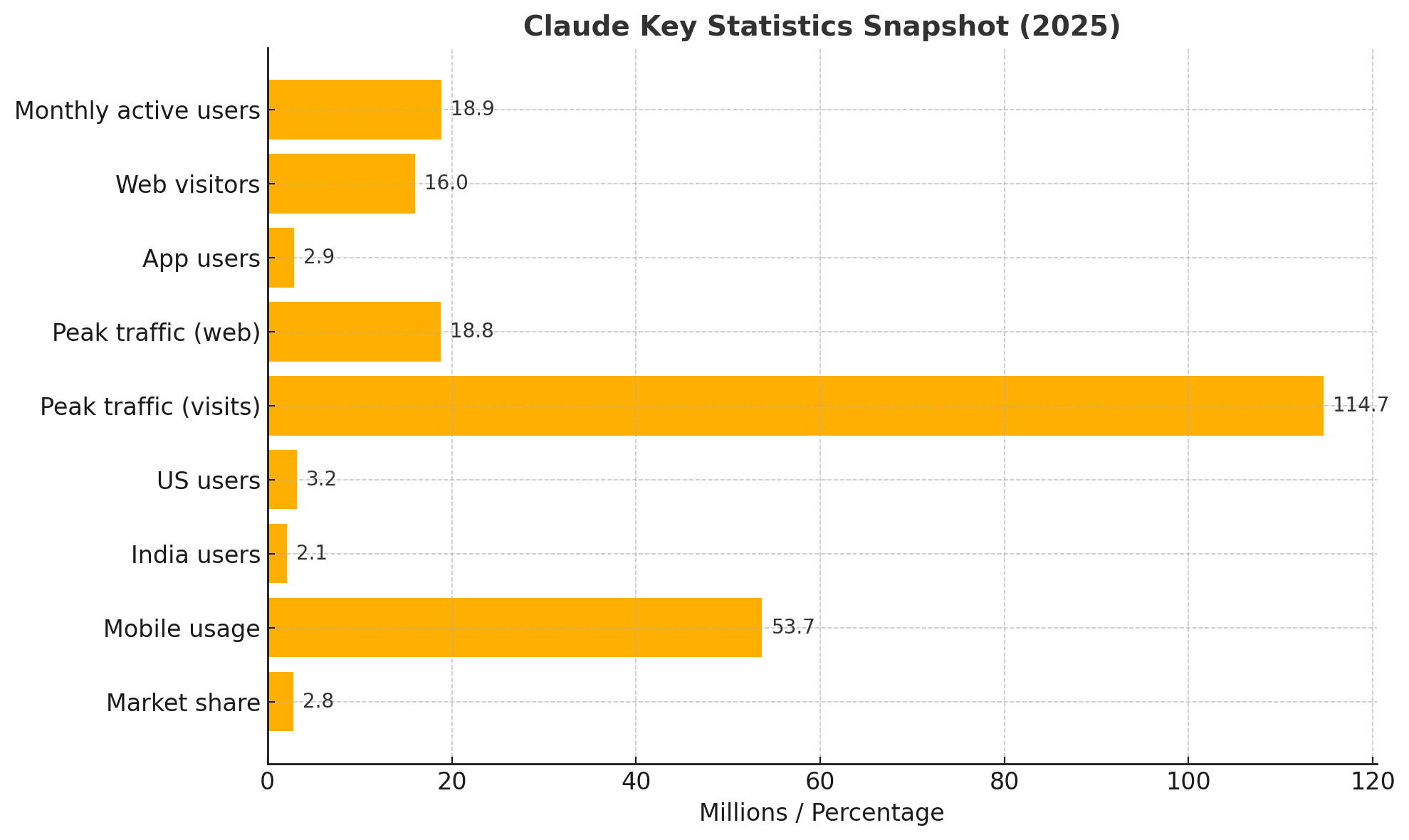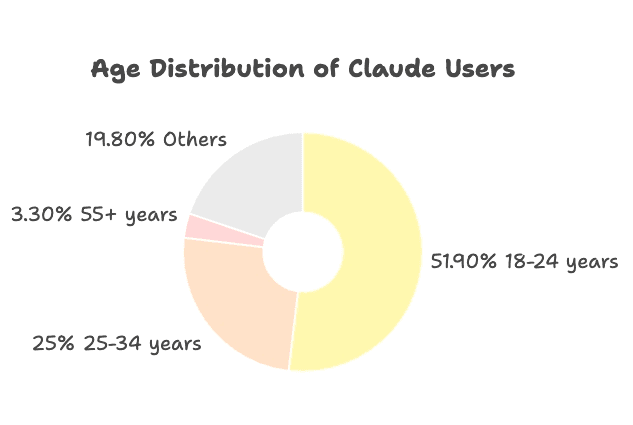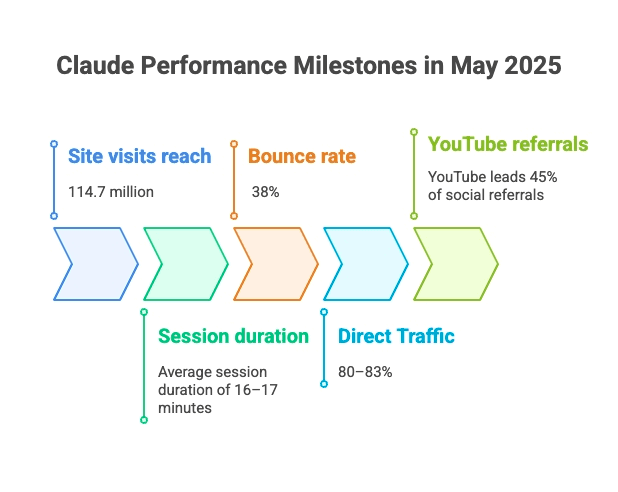I’ll be honest: I’m a numbers nerd. There’s something oddly satisfying about watching a new technology’s stats explode off the charts—especially when it’s an AI model like Claude, which has gone from “Who’s Claude?” to “Everyone’s using Claude” in what feels like the blink of an eye. As someone who’s spent years in SaaS and automation, I’ve seen plenty of hype cycles, but the growth and impact of large language models (LLMs) like Claude? That’s a whole new level. So, let’s dig into the latest Claude statistics—no fluff, just the data (and a few of my own hot takes).
Whether you’re a business leader, a data geek, or just trying to win your next AI trivia night, this roundup of 90+ key Claude statistics will give you the inside scoop on user growth, demographics, benchmarks, and why all these numbers matter for the future of AI.
Claude Statistics at a Glance: The Must-Know Numbers
Let’s kick things off with the highlights. Here’s a quick snapshot of the most important Claude statistics you need to know right now:
- Monthly active users: ~ (Jan 2025)
- Web visitors: ~ (Jan 2025)
- App users: ~ (Jan 2025)
- Peak traffic: ~ (Nov 2024); in May 2025
- Top countries: U.S. (~3.2M users), India (~2.1M), Japan, South Korea, Kenya
- User demographics: ~, 51.9% ages 18–24, 25% ages 25–34
- Mobile adoption:
- Performance benchmarks: , , ,
- Model specs: , (Claude 2.1+)
- Revenue: ,
- Funding: (Amazon $4B, Google $2B)
- Chatbot market share: (out of ~987M users)
If you only remember one thing: Claude is now a top-tier LLM with millions of users, serious funding, and the kind of growth curve that makes VCs do a happy dance.

What Is Claude? A Quick Primer
Let’s rewind for a second. What exactly is Claude, and why is everyone in the AI world talking about it?
Claude is an AI chatbot and large language model (LLM) built by , a startup founded by ex-OpenAI folks in 2021. It launched in March 2023 as a direct competitor to ChatGPT, but with a twist: Anthropic’s “constitutional AI” approach aims to make Claude safer and more steerable—think of it as an AI with a strong moral compass (or at least, fewer existential crises).
Claude’s main gig is being a “thinking partner” for everything from content creation and summarization to code writing, Q&A, and more (). It’s available via web, API, and integrations like AWS Bedrock and Google Cloud, making it a go-to for both solo users and enterprise teams.
Why do these stats matter? Because Claude’s rapid iteration—Claude 1.0, 2.0, 2.1, and now the multi-modal Claude 3 family—mirrors the breakneck pace of the entire LLM market. If you want to understand where AI is headed, just follow the numbers.
How Many People Use Claude? User and Adoption Statistics
Claude’s user growth is the stuff of startup dreams. Here’s how the adoption curve looks:
| Date | Monthly Claude.ai Website Users |
|---|---|
| Dec 2023 | 4.0 million |
| Jan 2024 | 5.4 million |
| Mar 2024 | 10.1 million |
| Jun 2024 | 13.3 million |
| Sep 2024 | 13.7 million |
| Nov 2024 | 18.8 million |
| Jan 2025 | 16.0 million |
- App users: (Jan 2025)
- Mobile downloads: Peaked at
Claude’s growth from 4 million to nearly 19 million web users in just a year is wild—even by AI standards. For context, that’s like the entire population of New York City and Los Angeles logging in every month to chat with a robot. Not bad for a product that didn’t exist two years ago.
Claude User Demographics: Who’s Using This LLM?
Who’s actually using Claude? Spoiler: it’s not just your local AI researcher or the guy who still thinks Clippy is coming back.
- Gender:
- Age:
- 25% ages 25–34
- Only ~3.3% are 55+
- Under 35: ~77% of users
This is a young, tech-savvy crowd—think students, early-career professionals, and the kind of folks who think “context window” is a perfectly normal thing to say at brunch. If you’re building products or marketing campaigns around Claude, you’ll want to keep these demographics in mind.

Claude’s Global Reach: Usage by Country
Claude isn’t just a U.S. phenomenon—it’s truly global, but some countries are leading the charge.
| Country | Monthly Users (Jan 2025) |
|---|---|
| United States | ~3.2 million |
| India | ~2.1 million |
| Japan | ~692,000 |
| South Korea | ~557,000 |
| Kenya | ~524,000 |
Together, the U.S. and India account for about . The rest is spread across Asia, Europe, and Africa. Kenya’s presence in the top five is a pleasant surprise—proof that AI adoption isn’t just a Silicon Valley party.
Claude Website and App Traffic: Engagement and Growth
isn’t just getting lots of clicks—it’s keeping people engaged:
- Site visits: (up 19% from April)
- Average session duration: ~16–17 minutes (that’s a lot of AI banter)
- Bounce rate: ~38%
- Traffic sources:
- ~8–9% search
- ~5% referrals
- Social: YouTube leads (≈45% of social referrals)
- Device split:
What does this tell us? Claude has strong brand recognition (people type the URL directly), and users are sticking around for deep, multi-query sessions. Also, if you’re not optimizing for mobile, you’re missing half the party.

Claude Performance Statistics: How Does This LLM Stack Up?
I love a good benchmark battle. Here’s how Claude performs on the tests that matter:
- Bar Exam (MBE): )
- Coding (HumanEval):
- Math (GSM8K):
- General Knowledge (MMLU): , slightly above GPT-4
- GRE (5-shot): ~166 Verbal, 159 Quant ()
- LSAT: ~161 average ()
- Medical (USMLE): ~68–69% (Steps 1–3)
Claude’s performance isn’t just “good for an AI”—it’s competitive with (and sometimes better than) humans on standardized tests. The latest Claude 3 models have also improved refusal rates (Haiku less than 10% vs. 25% for Claude 2.1) and speed (Sonnet is ~2× faster than v2.1).
Claude Model Evolution: Key Stats by Version
Claude’s story is one of rapid iteration. Here’s a quick breakdown of the major versions:
| Version | Release | Context Window | Parameters | Notable Features/Upgrades |
|---|---|---|---|---|
| Claude 1.0 | Mar 2023 | ~75k words | — | Initial release |
| Claude 1.3 | Apr 2023 | — | — | Safety refinements |
| Claude 2.0 | Jul 2023 | ~100k tokens | — | Major accuracy boost |
| Claude 2.1 | Nov 2023 | 200k tokens (~150k words) | — | Tool integrations, 50% lower hallucinations |
| Claude 3 (Opus) | Mar 2024 | — | 137B | State-of-the-art, multi-modal |
| Claude 3 (Sonnet) | Mar 2024 | — | — | 2× faster than v2.1 |
| Claude 3 (Haiku) | Mar 2024 | — | — | Minimal refusals (<10%) |
| Claude 3.5 Sonnet | Jun 2024 | — | — | Further speed optimizations |
| Claude Next | (Planned) | — | — | “Frontier” model, 10× more capable |
The context window alone——is a huge leap, letting Claude process massive documents or multi-turn conversations without losing track.
Claude in the AI Market: Revenue, Funding, and Business Impact
Claude isn’t just a technical marvel—it’s a business juggernaut.
- Revenue: , , projected
- Funding: (Amazon $4B, Google $2B)
- Market share: (~987M total users)
For comparison, OpenAI’s rumored revenue was ~$1B+ in 2023, so Anthropic is catching up fast. The Big Tech backing (Amazon, Google) puts Claude in the same league as the heaviest hitters in AI.
Claude Statistics for Business: Why These Numbers Matter
Let’s talk about why all these stats aren’t just for show. Here’s how they can inform real business decisions:
- Adoption trends: With , Claude’s rapid rise signals a huge, growing market for LLM-powered tools.
- User demographics & geography: Heavy usage in the U.S. and India? That’s where you want to focus your Claude-based products or marketing. A user base that’s ~77% male and mostly under 35? Time to tailor your UX and campaigns accordingly.
- Technical capabilities: Claude’s and high benchmark scores mean it’s ready for complex, domain-specific tasks—think legal analysis, tutoring, or coding assistants.
- Engagement metrics: Long session times and high mobile usage suggest you should optimize for deep, mobile-first experiences.
In short: Claude’s stats help you size the market, target the right users, and build products that actually get used.
The Future of Claude: Trends to Watch in AI Statistics
So, what’s next for Claude? Here’s what I’m watching:
- Claude-Next: Anthropic is working on a “frontier” model than today’s Claude. That’s not just a bigger number—it’s a leap in what LLMs can do.
- AI agents: (LLMs with tool-calling and autonomy). Claude’s tool integrations are just the start.
- Search interest: Searches for Claude have grown —public awareness is surging.
- User growth: After a late-2024 spike, monthly users dipped slightly in Jan 2025. How Claude rebounds (and how new versions drive adoption) will be a key trend to watch.
- Enterprise adoption: With fresh funding and partnerships (AWS, Google), expect more businesses to integrate Claude.
If you’re making bets on AI, keep an eye on these trends—they’ll shape the next wave of Claude statistics.
Conclusion: Key Takeaways from the Latest Claude Statistics
Let’s wrap up with the big picture. Claude has gone from zero to nearly 19 million monthly users in under two years, with a user base that’s young, global, and highly engaged. Its technical chops—massive context windows, top-tier benchmark scores—make it a real contender in the LLM space. And with , , and a roadmap full of ambitious upgrades, Claude is poised to keep shaking up the AI landscape.
For businesses, researchers, and anyone building on top of LLMs, these statistics aren’t just trivia—they’re a roadmap for where AI is heading. Use them to spot opportunities, avoid pitfalls, and maybe, just maybe, win that next AI trivia night.
Curious about more AI stats, web scraping, or how to put LLMs to work for your business? Check out more on the .
FAQs
1. What is Claude and why is it gaining popularity?
Claude is a large language model (LLM) that has rapidly gained attention for its powerful AI capabilities. Its popularity has surged due to its usefulness in automation, SaaS applications, and natural language processing tasks.
2. How fast has Claude grown in usage?
Claude has experienced explosive growth, transitioning from relative obscurity to widespread adoption in a short period. This rapid rise is reflected in its impressive usage statistics and increasing integration into various industries.
3. What sets Claude apart from other AI models?
Claude stands out due to its advanced language understanding, scalability, and ability to handle complex tasks efficiently. These strengths make it especially attractive for businesses seeking automation and productivity gains.
4. Who is using Claude?
Claude is being used across a broad spectrum of industries, including SaaS, automation, and data analytics. Its user base ranges from individual developers to large enterprises looking to streamline operations with AI.
5. Why are data and stats important when evaluating AI like Claude?
Monitoring usage statistics and performance metrics helps gauge the real-world impact and adoption of AI technologies. For enthusiasts and professionals alike, these numbers provide insights into trends, effectiveness, and the future potential of models like Claude.